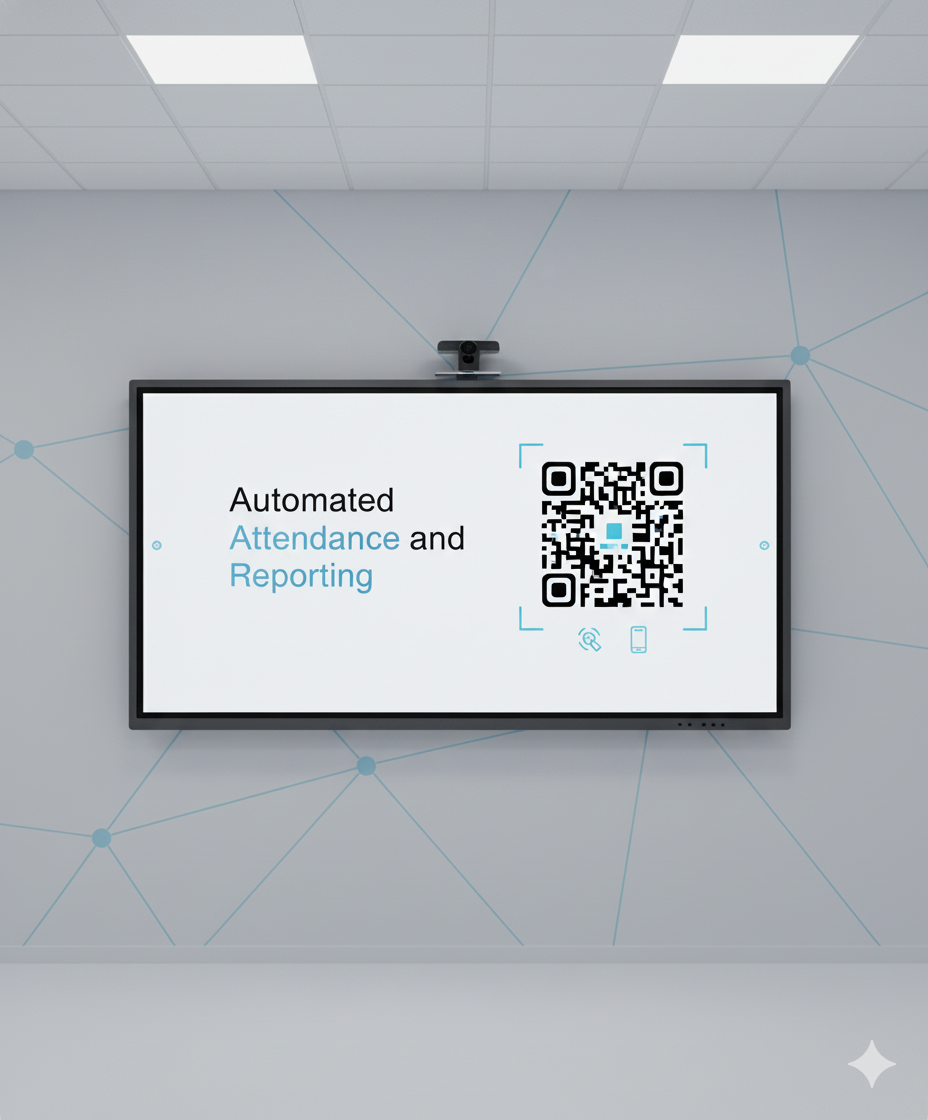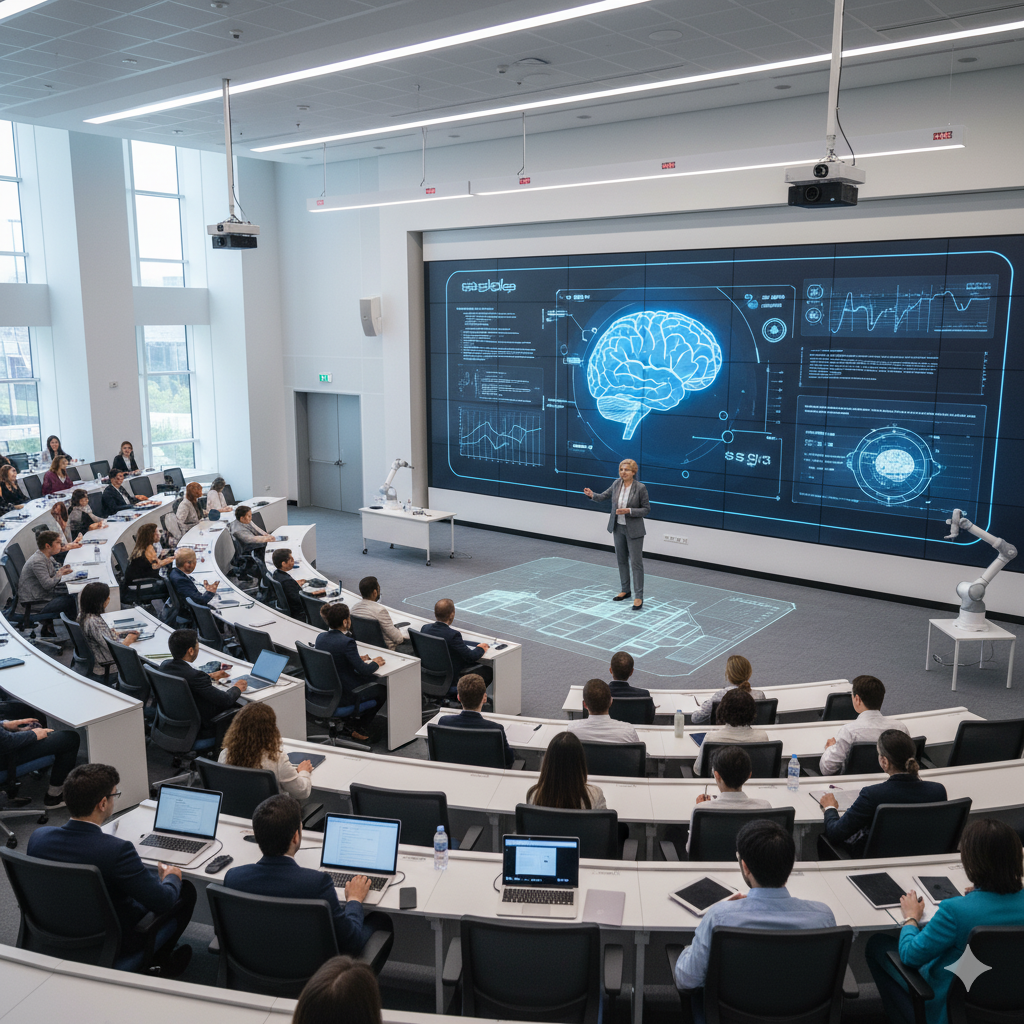7 Reasons Hybrid Learning is Redefining Higher Education

Many universities worldwide now offer hybrid courses. But hybrid learning isn’t just a response to the pandemic. In fact, it’s becoming a smarter, more adaptable way for colleges and universities to teach, connect, and evolve.
At its core, hybrid learning blends the best of both worlds—physical classrooms and online instruction—into a more flexible, tech-powered experience. It allows students to learn from anywhere, while still engaging with faculty and peers in real time. For institutions, it opens up new possibilities to reach more learners, improve access, and modernize how education is delivered.
In this blog, we’ll explore how a well-designed digital classroom setup, complete with the right interactive technology, can make this shift not just possible, but powerful. Because hybrid learning isn’t a passing trend. It’s a meaningful change that’s reshaping the future of higher education.
What is Hybrid Learning?

At its core, hybrid learning or blended learning is a model that blends face-to-face instruction with online learning experiences. Students can choose whether to attend in person or online. Sometimes they do both! You might have a group of students physically in the classroom while another group attends via live streaming, all receiving the same instruction at the same time.
But it’s more than just a balance of online and offline. Hybrid learning allows flexibility, personalization, and the integration of the best features from both types of education. Studies have shown that students tend to retain more when they can learn at their own pace, rewatch lessons, and actively engage through digital platforms. That’s where digital classrooms with interactive technology come into play.
1. Flexibility for Both Teachers and Students
Flexibility is one of the biggest reasons blended learning is gaining traction. Students today come from diverse backgrounds with varying needs. Some are full-time workers, others are parents, and some just prefer learning from home. Thus, the hybrid model allows students to access lectures and resources anytime, anywhere.
Imagine having students in the classroom physically, while others are miles away, learning from the same lesson, asking questions in real-time. That’s the beauty of a hybrid setup. Teachers no longer have to repeat the same lesson multiple times for different sets of students.
With a digital classroom setup, teachers can teach students in real-time and still record lessons, which means students can catch up later. It’s a game-changer for teachers dealing with different learning styles.
2. Personalization and Inclusivity
Hybrid learning isn't one-size-fits-all. One of the most appealing aspects of this model is its ability to cater to individual learning styles and paces. In a traditional classroom, some students might feel shy about raising their hands to ask questions. In hybrid setup, they can type in questions via chat, giving them more confidence and inclusivity. Those who need more time to absorb lessons can revisit the recorded content as many times as they like, ensuring that nobody gets left behind.
For teachers, a hybrid model allows them to use various tools and methods such as quizzes, videos, digital whiteboards, etc., to engage different types of learners. The days of rigid, lecture-only teaching are over. Blended learning means that each student can personalize their learning experience to match their needs, be it through live classes or learning from recorded materials at their own pace.
3. Blending the Best of Both Worlds
Here’s another solid reason hybrid learning is the future. It combines the best aspects of traditional and online education. Some concepts are better taught in person while others are more effectively covered online. This allows teachers to pick and choose which medium works best for each subject or concept.
What if a science teacher demonstrates a live experiment in class that’s streamed to online students. Students learning online can review the theory, pause when needed, and collaborate in real-time using interactive tools. In essence, students get the full 360-degree digital classroom experience, blending the hands-on, real-time interactions of a physical classroom with the depth and flexibility of online content.
4. Enhanced Engagement with Interactive Technology
Here’s where it gets really fun. Let’s talk about how hybrid learning is supercharged by interactive technology. You know students today grow with a smartphone in their hands. They crave engagement and dynamic learning experiences, not monotonous lectures. This is where interactive projectors and digital classrooms help.
Imagine a classroom where the projector isn’t just for presentations but allows students to interact with the screen itself. They can draw, write, zoom in on content. Hybrid setup thrives when students can engage in hands-on activities, collaborate on projects via digital whiteboards, or participate in interactive quizzes in real-time, regardless of whether they are physically present or attending remotely.
For example, a teacher can display a 3D model of the human heart, rotate it, zoom in, and even let students (both online and offline) interact with it. This kind of immersive learning is exactly what keeps students hooked.
5. Cost-Efficiency and Scalability
Blended learning is not only more cost-effective but also scalable. Higher education institutions are always looking to minimize overheads. Hence, the hybrid model allows you to accommodate more students without needing additional physical space. Instead of building new classrooms or expanding campuses, institutions can rely on technology to meet the growing demand.
By investing in a digital classroom setup, institutions can reduce the need for printed materials, physical travel, and even large physical spaces. And when we’re talking about scalability, blended learning opens the doors to education for those who otherwise wouldn’t have the chance—students from different cities, states, or even countries can easily join in without the limitations of physical distance. It’s about making quality education accessible to all, no matter where they are. The hybrid teaching model creates this inclusivity by eliminating geographical barriers.
6. Data-Driven Insights for Better Teaching
Hybrid learning isn't just great for students. It also empowers teachers by giving them access to valuable data and insights. With digital classrooms, teachers can track students’ progress through analytics—who’s attending classes, who’s rewatching recorded lectures, and how well they’re performing on assessments. This data allows teachers to adjust their teaching methods in real-time.
If a student is struggling with a particular topic, teachers can spot it early and offer extra support. This data-driven approach leads to more personalized learning experiences, better outcomes for students, and more informed decision-making for educators. Digital classrooms and hybrid setups provide real-time feedback to students and teachers, creating a loop of continuous improvement that benefits everyone involved.
7. Future-Proofing Education
The world is changing fast. The workforce of tomorrow will need to be adaptable, tech-savvy, and capable of learning and working in diverse environments. Hybrid learning is a direct response to these challenges, preparing students for a future where digital literacy is a must.
Moreover, the hybrid model ensures that education is future-proof. No matter what the world throws at us—be it another pandemic, natural disasters, or technological shifts—students will still have access to quality education. This model has shown resilience during crises, ensuring that learning doesn’t stop, even when the world does. Thus, by adopting hybrid education now, institutions are setting themselves up for long-term success. They’re preparing their teachers and students for a future where learning is dynamic, flexible, and ongoing.
The Role of Digital Classrooms in Supporting Hybrid Learning
Before wrapping up, we want to give you a sneak peek into how digital classrooms—particularly those with interactive projectors—can serve as the backbone of this hybrid learning approach. Think of it as the tech engine driving this entire model.
Imagine a digital classroom setup that features a powerful computing unit with i5/i7 processors, a 200-inch expandable interactive display, dual cameras, and 3D capabilities. Now add the fact that teachers can record classes in HD, making them accessible to students anytime, anywhere. This is what makes blended learning not just possible, but exciting and effective.
With tools like these, teachers don’t have to compromise between online and offline learning. They can do both simultaneously, seamlessly blending the two to create a more engaging and effective learning environment.
Conclusion
Hybrid learning is reshaping the way we think about education. From flexibility to enhanced engagement, personalization to cost-efficiency, hybrid education has too many benefits to ignore. It allows us to future-proof our teaching methods and reach students in ways we never thought possible. Not only will it keep you ahead of the curve, but it will also ensure that your students receive the best education possible—one that’s adaptable, inclusive, and future-ready!
FAQs for Educators
1. How does hybrid learning affect teacher workload?
Initially, there may be some adjustments as teachers learn to navigate both online and offline formats. However, once set up, hybrid learning can reduce redundancy in teaching, as lessons are accessible both live and recorded. Tools like interactive projectors streamline this process, making teaching more efficient.
2. What kind of infrastructure is needed for hybrid learning?
You’ll need a reliable digital classroom setup that includes interactive projectors, high-speed internet, and recording capabilities. Additional tech tools like dual cameras and powerful speakers enhance the experience.
3. How can hybrid learning improve student outcomes?
Blended learning allows for greater flexibility and personalized learning. Students can access materials at their own pace, review recorded lectures, and engage in more interactive, collaborative learning, which can improve understanding and retention.
Embrace the Digital Classroom Advantage
Hybrid learning is only as effective as the technology behind it. With the right digital classroom setup, your institution can deliver engaging, flexible, and future-ready education that meets the needs of every learner—whether they're on campus or online. From interactive displays to seamless content sharing, Roombr’s all-in-one digital classroom solution helps you create smarter learning environments without the complexity.
Don’t let outdated infrastructure hold you back. Discover how Roombr can help you upgrade to a powerful digital classroom experience. Book a free demo today!
Parvin Khatun
Share
Step Into the future of
Education with Roombr


















